
Diseases and pests of honeysuckle
Treat them naturally
Contents
Generally, honeysuckle is a robust plant, fearing little from pests and diseases. However, climbing honeysuckles are often victims of several colonies of aphids that feast on their young shoots. The honeysuckle weevil can also cause damage to our beautiful climbing plant. In confined situations, powdery mildew, or “white disease,” makes its appearance. However, be aware that scale insect attacks are rare on honeysuckles. As for bush honeysuckles (for example, Lonicera nitida), they encounter few pests or parasites and are not very susceptible to diseases. Discover the main pests and diseases, appropriate treatments, and how to protect a honeysuckle from pests through prevention.
Powdery mildew: the main disease of honeysuckle
Powdery mildew is a fungal disease that frequently affects plants. Highly contagious, it can easily spread to nearby plants. It is also known as “white rot.”
Symptoms
Microscopic fungi cause the appearance of a white, greyish, and powdery coating on all parts of the plant. Young stems, leaves, and flowers become distorted and dry out. Powdery mildew typically develops in early spring or autumn in poorly ventilated plantings during seasonal changes. During these times, fluctuations between warm and cold temperatures and dry and rainy weather are factors that trigger powdery mildew. This disease will not kill your climbing plant; it will simply be less aesthetically pleasing.
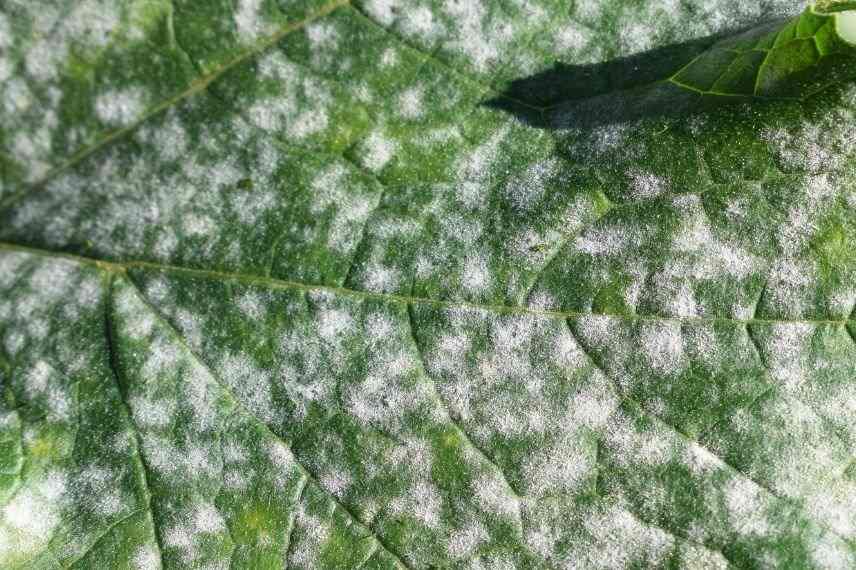
The presence of a white powder on the leaves is a sign of powdery mildew infection
Natural treatments to combat powdery mildew on honeysuckle
If your honeysuckle shows early symptoms, remove all infected parts, dispose of them or burn them. Do not add them to the compost heap, as there is a risk of contamination in your garden when you spread your compost.
- Black soap
Preferably in the evening, treat your honeysuckle with a mixture of 5 teaspoons of baking soda, 3 tablespoons of black soap, and 5 litres of warm water. A weekly spray will help block the development of fungi.
- Skimmed milk
You can use a treatment with skimmed cow’s milk 1 to 2 times a week. The microorganisms present in the milk will boost your honeysuckle’s resistance and combat powdery mildew. The preparation is very simple: pour 10 cl of milk into a sprayer for one litre of water, and shake well to mix.
- As a preventive measure
Avoid wetting the foliage of your honeysuckle during watering. Place your honeysuckle in a location where air circulation is good. Regularly check the condition of your plant during periods conducive to the development of powdery mildew (for example, rainy weather following a dry spell). Spraying horsetail manure is also effective in strengthening the plants’ immune system. For curative or preventive treatment, you can also prepare an oil maceration of garlic or a garlic decoction.
Aphids
Small sap-sucking insect, the aphid is the main enemy of honeysuckle. On plants, this insect gathers in colonies under the leaves and at the tips of young shoots where it lays its eggs. Generally black or green, sometimes winged, it feeds on sap by piercing the plant. The honeysuckle aphid (Hyadaphis tataricae) particularly thrives on the Tatarian honeysuckle.
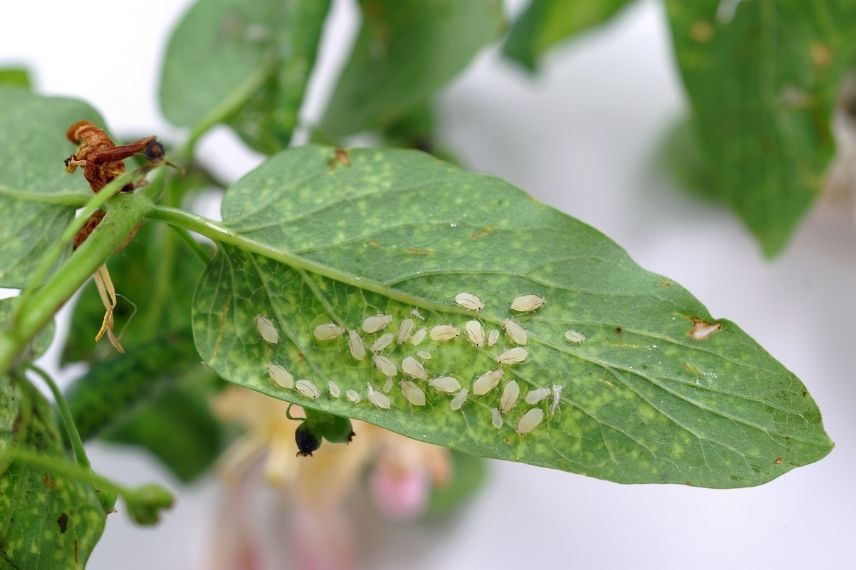
Aphids on the underside of a honeysuckle leaf
Symptoms
One may notice curling of the leaves and deformation of the shoots, as well as a sticky black substance, known as sooty mould. This is a disease that develops from the honeydew secreted by the aphids, complicating photosynthesis.
Natural treatments to combat aphids on honeysuckle
If your honeysuckle is lightly infested, you can get rid of the aphids by spraying your plant with a strong jet of water (from a hose). Crushing the aphids by hand is another solution, albeit more tedious, but effective.
- Black soap
Regarding treatments, carry out sprays of soapy water at the first signs of attack: 15 to 30 g of black soap per litre of water.
- Pyrethrum
Only in the case of a massive aphid attack, use an insecticide based on plant pyrethrum, preferably in the evening. Caution: this insecticide is harmful to garden wildlife!
- Beneficial insects and prevention
Introducing larvae of beneficial insects (ladybirds, lacewings) is generally recommended for climbing honeysuckles installed in a conservatory or greenhouse. In the garden, attract aphid predators (hoverflies, birds, earwigs…) by promoting biodiversity through the planting of nectariferous plants and creating shelters for wildlife.
As a preventive measure, nettle maceration is a natural repellent against aphids. To prepare it, soak 1 kg of fresh nettle leaves in 10 litres of water for 12 hours. Use this maceration diluted to 10% in rainwater (1 litre of maceration for 10 litres of water).
Discover other Honeysuckle
View all →Available in 2 sizes
Available in 2 sizes
Available in 2 sizes
Available in 1 sizes
Available in 1 sizes
Available in 1 sizes
Available in 1 sizes
Available in 2 sizes
Available in 1 sizes
Available in 1 sizes
The honeysuckle weevil
In the family of weevils, we find Otiorhynchus clavipes, more commonly known as the honeysuckle weevil. Its larvae (white grubs) develop underground and cause damage to the roots by gnawing on them. These insects become active at night and hide in the vegetation during the day.
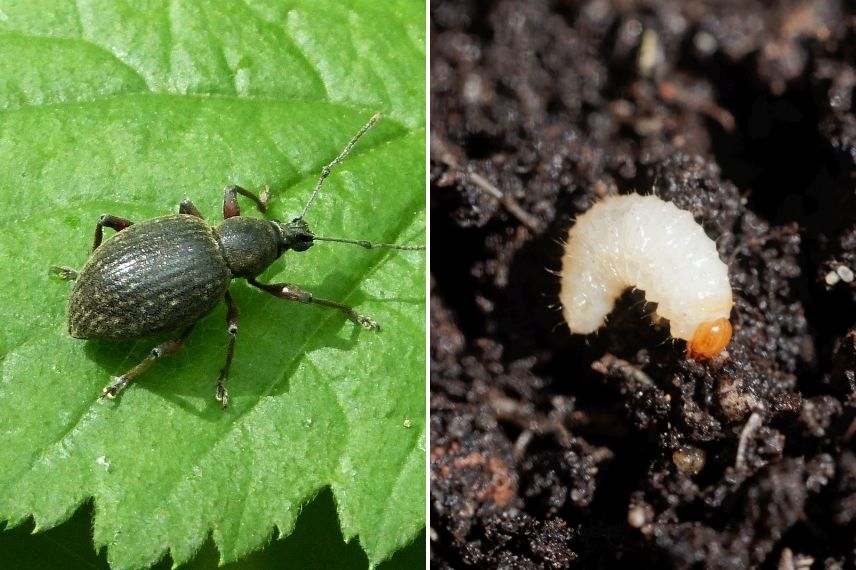
Otiorhynchus clavipes (photo gailhampshire – Flickr) and larva
Symptoms
The adults feed on the leaves, leaving characteristic puncture marks along the edges. They also devour the new shoots at their base, flower buds, and flowers. Damage caused by the larvae results in wilting and stunted growth of the plant.
Natural treatments to combat the honeysuckle weevil
To combat this weevil, apply nematode sprays in early spring or autumn. Nematodes are parasitic capable of killing the larvae from the inside. Ensure the soil remains moist for the survival of the nematodes, but also to disrupt the developmental stages of the larvae, which do not thrive in humidity. To achieve this, mulch your soil. You can also tackle the adults by manually removing them from your honeysuckle at dusk.
To find out more
Discover all our tips to know
- How to make horsetail manure?
- How to make nettle manure?
- How to prepare Garlic manure or garlic decoction: recipe and uses in the garden?
- How to use pyrethrum in the garden?
Find all the information on:
- Subscribe!
- Contents
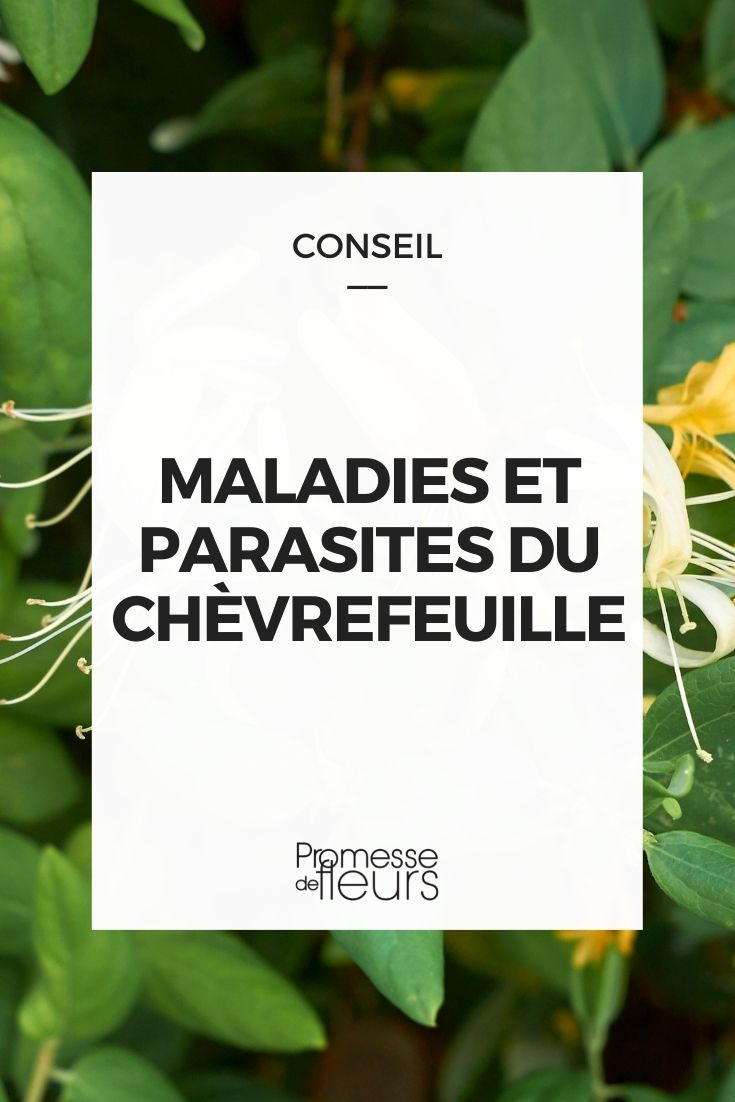































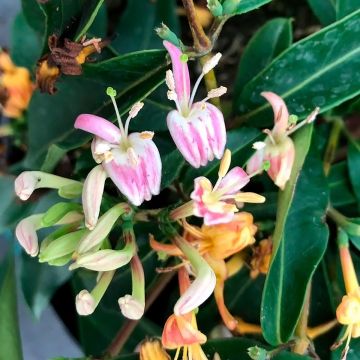

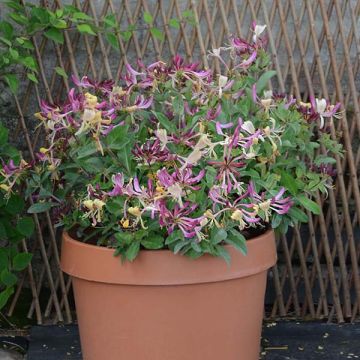

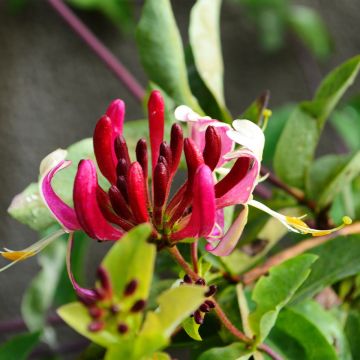
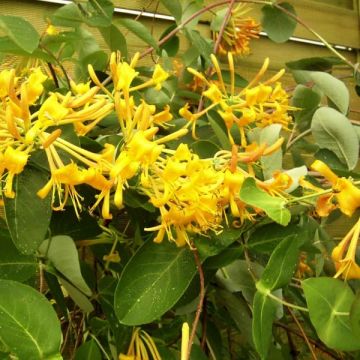
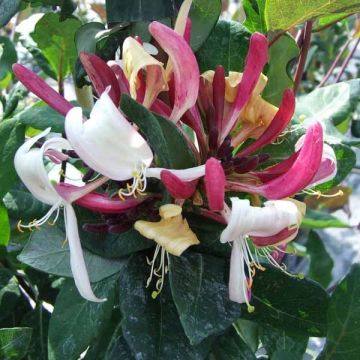


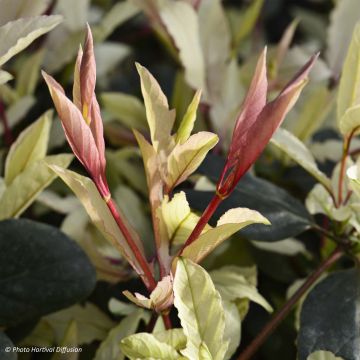
Comments